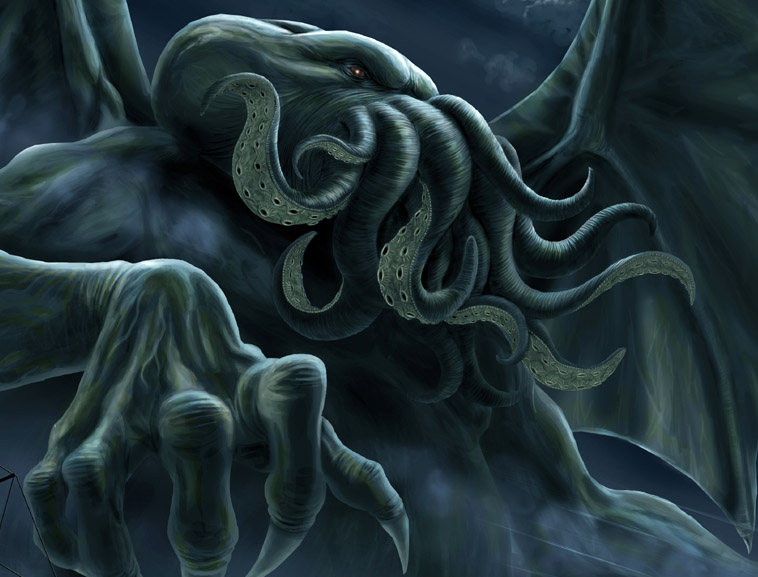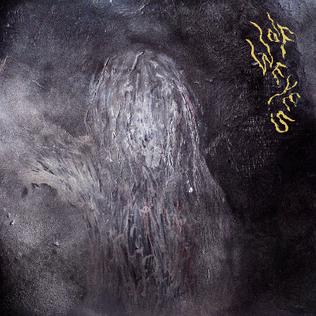
 Southern Lord; 1998, 2008/October 6, 2003
Southern Lord; 1998, 2008/October 6, 2003
http://www.southernlord.com/band_BNW.php
http://www.plotkinworks.com/khanate/
This review--more of a shootout, really--has been a long time coming.
My entry for
Things Viral had been sitting on my computer in semi-completed form since around November of last year, when we were still up to our eyeballs with work on our decade-end list. I wrote an extremely short blurb for it, under minimal protest, that I felt would adequately scratch the surface of an album I really wanted to dig into and flesh out every gory detail of in this column as one of the most extreme
(TO TEH MAXX!!1) musical experiences that would ever be featured here.
Then sometime in the interim, Chris introduced me to Burning Witch. And well... into the shitbin my old review went.
Before going further some background is required on these two titans of the Southern Lord label, and how they ended up following similar evolutionary paths to somewhat different conclusions. Burning Witch is the earlier of the two bands, active from 1995 to 1998 and featuring the formidable talents of guitarist Stephen O'Malley, the mighty drone lord who would later end up in genre legends SunnO))) and... Khanate, only three years after Burning Witch split up. O'Malley's guitar presence would ultimately define and shape the work of both bands, which otherwise share no members. You can also hear echoes of both bands in SunnO)))'s own album
Black One but that has a more obvious black metal aesthetic, whereas the other two walk previously untrodden and very, very scary ground.
Burning Witch is a band I'd often heard described as "apocalyptic," but after listening to weird shit including lots of gutbucket, angst-ridden and low-end pulverizing acts like Melvins, Neurosis, Boris, Meshuggah and Electric Wizard that kind of descriptor gets thrown around enough to lose its meaning. But rest assured, when even jaded ears hear Burning Witch and use that word (usually preceded by various superlative expletives and/or shat pants), they mean every fucking syllable. The 2008 reissue of
Crippled Lucifer (Seven Psalms for Our Lord of Light) includes both of their major releases,
Towers... (recorded by Steve Albini, so you know it's quality) and
Rift. Canyon. Dreams., consolidating ten tracks into about an hour of punishing aural suicide.
This stuff is pure madness--all tortured guitar grind and bass tuned so low that I wonder how the strings even move over crashing, deliberate rhythms that suggest Black Sabbath slowed to about a third of the BPM, spread over tracks that average around eight minutes. But even with O'Malley's guitarwork, a balance of dismal, slowly decaying riffs and screeds of noisy feedback (he even pulls off some sick Iommi-worthy trills in
"Sacred Predictions"), Burning Witch's sonic palette generally doesn't deviate too far from the doom metal mold. But it doesn't really matter, and here's why:
I don't know which Event Horizon-esque hell dimension their vocalist (who goes by the somewhat lame pseudonym Edgy 59) hails from, but he is the defining characteristic of Burning Witch, and what elevates them over the standard doom metal outfit. His default mode is an inhumanly horrific, psychotic shriek that just
bleeds evil, in a way I've heard no other vocalist do even in other realms of extreme metal--with one possible exception. And just after you start getting acclimated to this, he sings(!) some haunting passages with a strangled midrange wail that might be even more unsettling. He even indulges in creepy little tics, like a witchy cackle in the conclusion of "The Bleeder." The lyrics are the usual harrowing quasi-Satanic imagery you can expect with this sort of material, but it wouldn't fucking matter if it was the opening theme of My Little Pony--Edgy 59's voice would make them deliciously, indescribably terrifying, and leave most vocalists participating in metal as a whole looking like a bunch of tryhard adolescents.
Leaving big shoes to fill, the unit that ultimately continued Burning Witch's legacy was an all-star doom supergroup--two members of OLD, Alan Dubin and James Plotkin, along with the aforementioned O'Malley and Tim Wyskida of Blind Idiot God (who played
very different music, but besides the point). Khanate's 2001 album ended up sounding a lot like Burning Witch, even if the sonics were a bit clearer, Dubin's screeches a bit more coherent, the stretches of void between thundering slams a bit more indulged. There were still nods given to the genre signposts, including riffs and a discernible, albeit
really goddamn slow tempo. The sound could still be described as metal, just more abstract than the norm.
Things Viral is where the band really defines itself and throws all trappings right out the window from the get go. If
Crippled Lucifer was the sound of the world giving up the ghost in a chaotic onslaught of fire and brimstone,
Things Viral would be what remained after the sky burned out, the dying fires receded and a new ruined Earth revealed, cold and stripped of all life.
Riffs have completely given way to bleak drones that seem to stretch on for eternities, only to abruptly strike with a single, shuddering chord or passages of expertly conjured feedback. Wyskida's percussion is more impressionistic than anything--there is no steady pulse, only the odd crash of a cymbal, the funereal sound of a distant tom, or a sudden rising clamor that punctuates the next jarring assault and ends as soon as it began. The first two tracks don't really have a beginning or end, they simply drift in from the darkened fog and hover inside the listener's head for twenty minutes before fading into the next unobtrusively.
"Dead" (
NSFW!) is really the only track out of four that sounds like it was at all composed--at 9:28 it's also the shortest on the album by far.
Alan Dubin is an interesting study of contrasts with Edgy--the former is as perfectly mixed, clear and comprehensible as the latter isn't. Shrieks emanate from the core of his body in long terrible streams, hanging on every grim word for seconds at a time like his life depends on it. His murderous stream-of-consciousness lyrics are the only accompaniment to this sonic wasteland, and his fractured narrative presents truly disturbing revelations ("pieces of us in my hands, on the floor....
in my pockets"). Edgy's Jekyll-and-Hyde act evokes imagery of some poor bastard being slowly vivisected and eaten by an ancient creature out of Lovecraftian horror; Dubin's voice is that of the shadowy being witnessing the spectacle. And that being is trying to drive you insane. Have I mangled enough metaphors yet?
So... which is better? Who wins?
Tough call. I think the average listener (right, like any of those would be listening to this shit) would probably enjoy and identify with
Crippled Lucifer more, as it has actual
riffs, a little more variety and hints of structure coupled to a general metal aesthetic. Edgy's vocals render the words mostly incomprehensible which for people who giggle while reading/listening to metal lyrics might be an important factor. However, musically
Things Viral is far more groundbreaking, and--in this author's opinion--even more depressive and frightening in its abject nihilism. The performances also feel a little more focused, even as they stretch over ten minutes.
Verdict? At the risk of copping out, these are the Alpha and Omega of this genre, and you can't fully appreciate the power of each until you listen to both. So if you have the testicular fortitude and a couple hours or so to kill, do it.
-SJ
 Normally my 10/31 tunes are a lot more kitschy--Cramps, Misfits, Screamin' Jay etc. etc.--but this year my sights are set on complete skullfucking terror, something more Lovecraft than Roger Corman, and so I dug up some perfect sonic hellscapes to match. Figured I'd share:
Normally my 10/31 tunes are a lot more kitschy--Cramps, Misfits, Screamin' Jay etc. etc.--but this year my sights are set on complete skullfucking terror, something more Lovecraft than Roger Corman, and so I dug up some perfect sonic hellscapes to match. Figured I'd share:















